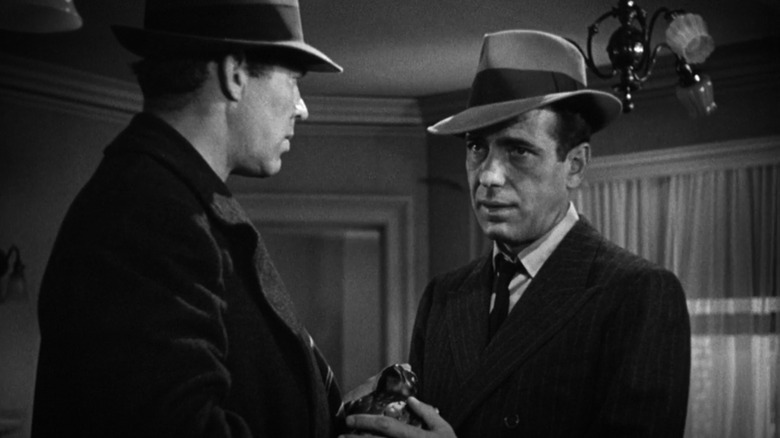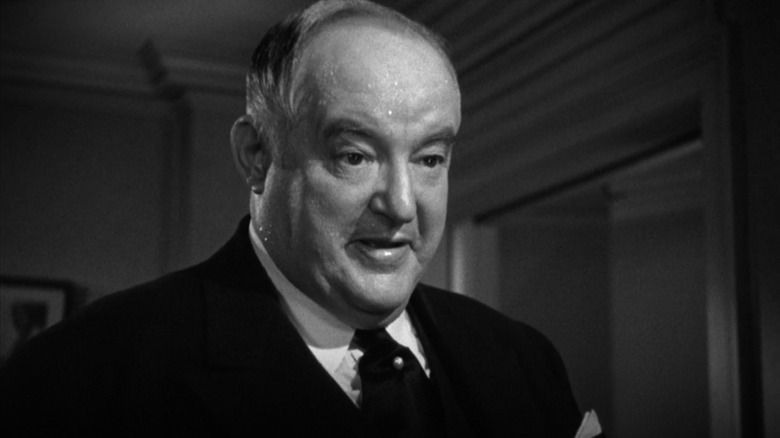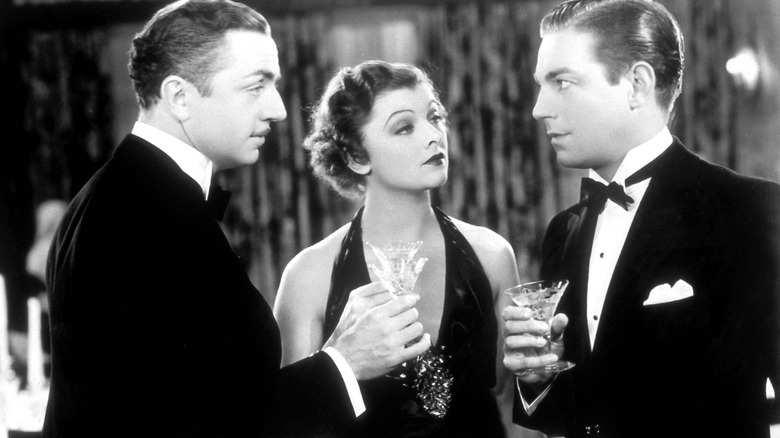The Surprising Way The Maltese Falcon Influenced World War II
We may receive a commission on purchases made from links.
After you make a film, you never can predict how finished product will be accepted by people. Sure, you hope the average audience member enjoys the picture you have made, but its lasting impact will always be completely unknown until far down the road. George Lucas did not think "Star Wars" would eventually spawn an immersive hotel. The folks at Pixar did not think they would help effectively wipe out hand drawn animation from Hollywood productions. Jake Kasdan did not know that every biopic about a musician will now be judged against "Walk Hard: The Dewey Cox Story" when making his parody film. How could they know these things? They were just making movies they wanted to make and hoped people would like them.
When John Huston was making "The Maltese Falcon," I am sure the only thing on his mind was hoping he would not screw up his very first movie. He was making this small-budget private investigator story with a name actor who hadn't exactly become a full-fledged star yet in Humphrey Bogart. As we now know, over 80 years after the film's release, "The Maltese Falcon" truly shaped the way we think about film noir in Hollywood and has inspired countless filmmakers, whether they were making a crime picture or not. What John Huston did not expect, because no one could, was how a small element of his film would impact some of the men fighting in World War II.
The Fat Man'
The book "Peace & War: Reminiscences of a Life on the Frontiers of Science" is the memoir of Robert Serber, one of the members of the Manhattan Project. He worked alongside J. Robert Oppenheimer to develop the atomic bomb as a chief analyst. In writing about his time working on Tinian, one of the Northern Mariana Islands, he describes how a couple of now-classic films gave name to a couple of the bombs being developed and built under his supervision:
"At our camp two Quonset huts served as our laboratories where the bombs were to be assembled. One was for Fat Man, the other for Little Boy. At Los Alamos I had given the bombs names descriptive of their shapes, the gun assembly was the Thin Man, taken from the title of the Dashiell Hammett detective novel, which had recently been made into the William Powell-Myrna Loy movie. The name the Fat Man for the implosion bomb followed naturally, after S[y]dney Greenstreet's role in 'The Maltese Falcon.' The original Thin Man bomb, designed to contain the high-velocity gun intended for plutonium assembly, was so long it filled two bombs bays of a B-29. In drop tests the Air Force ran into trouble getting the two hooks to release simultaneously and was relieved when a much shorter, one bomb bay version was substituted, sufficient for the low-velocity uranium assembly gun. They named the new version Little Boy, by comparison with Thin Man."
Thanks to Sydney Greenstreet's unbelievable, Academy Award-nominated performance as Kasper Gutman, aka "The Fat Man," a scientist could give a cute nickname to a weapon that would most assuredly kill a lot of people. John Huston could not have seen that development coming because it is an absurd thought. It's bad enough that a character has to have the nickname "The Fat Man" himself (speaking as a fat individual myself), but hanging that on Greenstreet as well doesn't feel too good.
The Thin Man
At least that name is a little more fitting than "The Thin Man." Greenstreet's Gutman is an imposing, scary figure in "The Maltese Falcon." On the other hand, "The Thin Man" is a delightful romp about two charming, alcoholic married investigators. They didn't deserve to be associated with items that would actually cause real people to lose their lives. All they should be involved with is drinking, snappy banter, and more drinking. "The Thin Man" is more fitting as the ironic inspiration for the name of the production company founded by Mike Leigh and his late producing partner Simon Channing Williams, Thin Man Films, a name they chose because they are, as Mike Leigh describes it in one of his audio commentaries, both "rather corpulent."
Of course, nothing about this changes the fact that "The Maltese Falcon" is still one of the crowning achievements of film noir. It's still a beautiful, beguiling film with one of cinema's ultimate macguffins in the titular statue. The film was a pretty big hit that sent Humphrey Bogart up a rung in his star status, finally letting him tackle a romantic lead for the first time the next year with "Casablanca," also featuring Sydney Greenstreet.
But the film, in a roundabout way, is associated with a deadly weapon. Like I said, you never know how your film is going to impact somebody.


